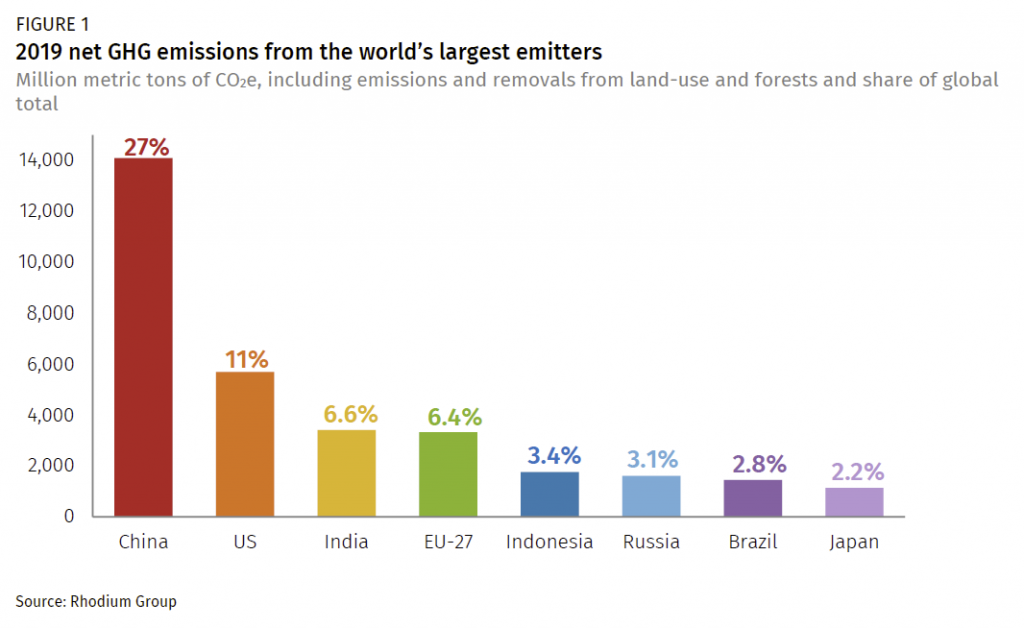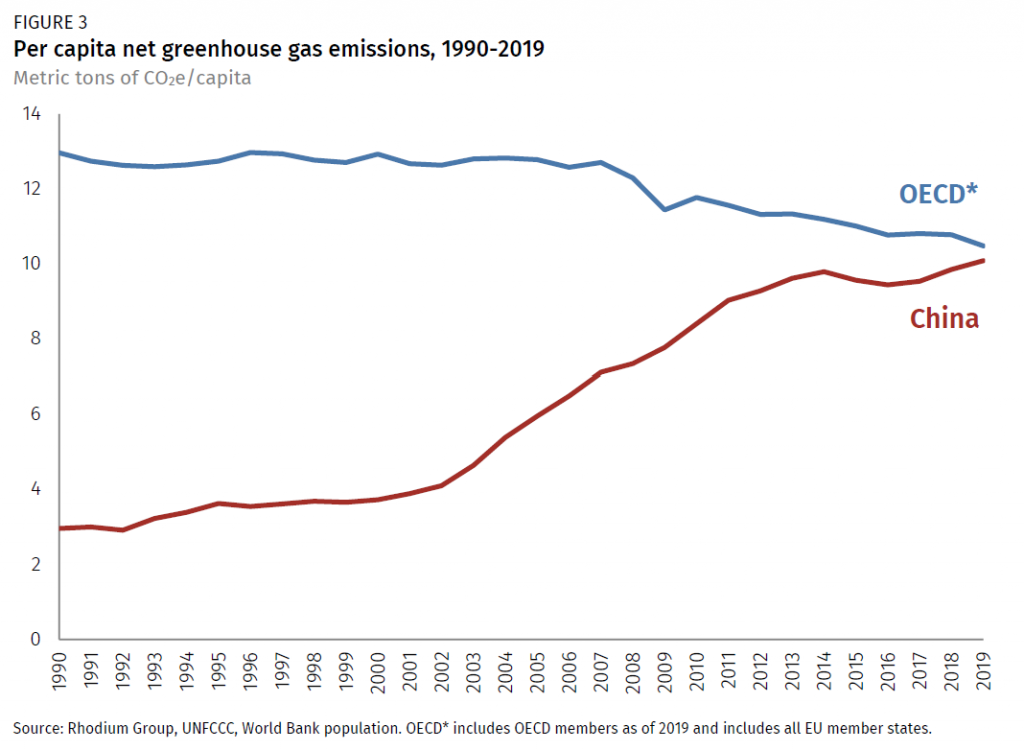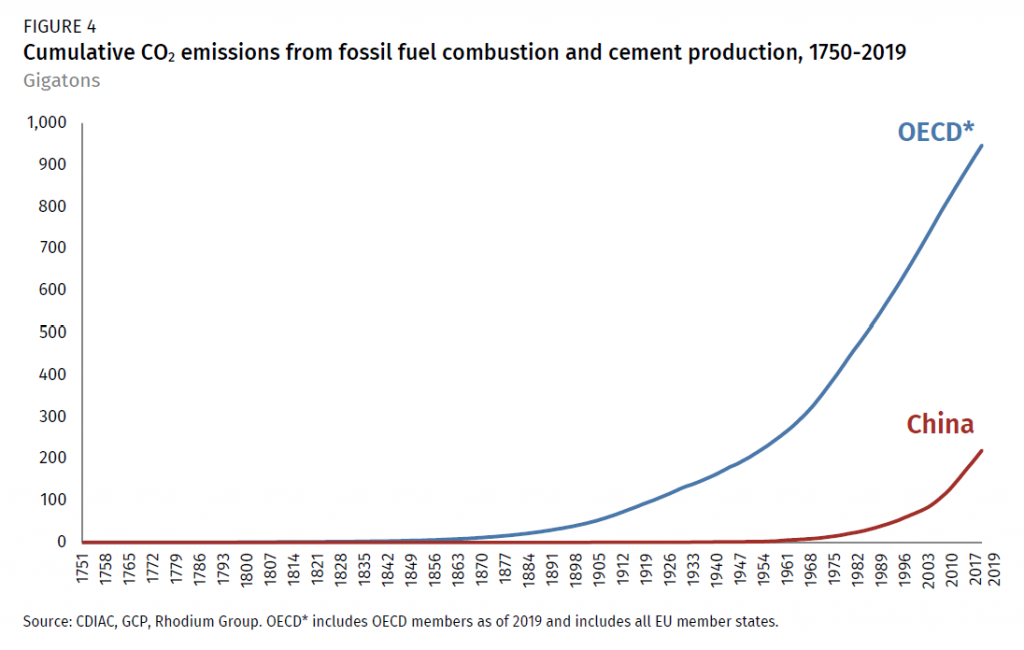
Using the global emissions data through 2019, the Rhodium Group has estimated that in 2019 China’s annual Greenhouse gas emissions exceeded those of all developed countries combined. Each year Rhodium Group provides the greenhouse gas (GHG) emissions estimates at global and country-level through the ClimateDeck.
China’s emissions were less than a quarter of developed country emissions in 1990, but over the past three decades have more than tripled, reaching over 14 gigatons of CO2-equivalent in 2019 says the research published on May 6, 2021.
Rhodium Group’s estimates for 2019 shows that global emissions, including emissions of all six Kyoto gases, inclusive of land-use and forests and international bunkers, reached 52 gigatons of CO2-equivalent in 2019, a 11.4% increase over the past decade.
China alone contributed over 27% of total global emissions, far exceeding the US—the second highest emitter—which contributed 11% of the global total (Figure 1). For the first time, India at 6.6% of global emissions is placed third ahead of the European Union (EU-27).

In 2019, China’s GHG emissions passed the 14 gigaton threshold for the first time, reaching 14,093 million metric tons of CO2 equivalent (MMt CO2e) (Figure 2). This represents a more than tripling of 1990 levels, and a 25% increase over the past decade. As a result, China’s share of the 2019 global emissions total of 52 gigatons rose to 27%, says the Rhodium Group’s research.

In 2019, China’s per capita emissions reached 10.1 tons, nearly tripling over the past two decades (Figure 3). This comes in just below average levels across the OECD bloc (10.5 tons/capita) in 2019, but still significantly lower than the US, which has the highest per capita emissions in the world at 17.6 tons/capita.

The Rhodium Groups says that while China exceeded all developed countries combined in terms of annual emissions and came very close to matching per capita emissions in 2019, China’s history as a major emitter is relatively short compared to developed countries, many of which had more than a century head start.
A large share of the CO2 emitted into the atmosphere each year hangs around for hundreds of years. As a result, current global warming is the result of emissions from both the recent and more distant past.
The groups estimates shows that members of the OECD bloc have emitted four times more CO2 on a cumulative basis than China since 1750 (Figure 4). Hence China though a major polluter still has a way to go before surpassing the OECD on a cumulative contribution basis.

